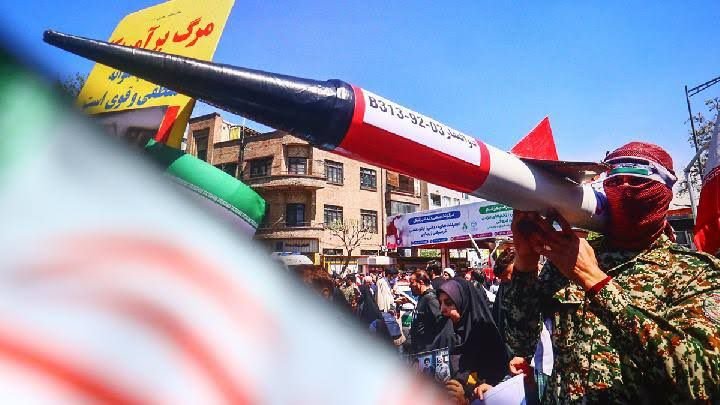
By Fakih Fadilah Muttaqin
The recent escalation between Iran and Israel—marked by Tehran’s unprecedented direct missile strike—has reshaped the regional landscape in the Middle East. While headlines focus on the military spectacle, a deeper and more consequential reality is unfolding: the long-standing narrative of sectarian division in Islam, especially between Sunni and Shia, is being steadily dismantled. And in its place, a broader political consciousness is emerging—one that challenges the legacy of Western exploitation and division. For decades, the United States has positioned itself as the self-appointed guarantor of “stability” in the Middle East. In reality, that “stability” was often a euphemism for control—over governments, narratives, and, most critically, oil. The Sunni-Shia divide, frequently portrayed as a timeless theological conflict, was in fact politically instrumentalized to fragment the Muslim world, enabling easier access to resources and prolonged foreign dominance.
The roots of this manipulation go back to the colonial period. Following the Sykes-Picot Agreement of 1916, European powers carved up the remnants of the Ottoman Empire into artificial nation-states. These states were deliberately engineered to be fragile, multi-sectarian, and dependent on external support. As oil became the world’s most strategic commodity, control over sectarian allegiances became as important as controlling the oil fields themselves. After World War II, the United States inherited this imperial architecture. By backing Sunni monarchies like Saudi Arabia and framing Iran post-1979 as a Shia pariah, Washington solidified a simplistic binary: Sunni equals moderate and Western-aligned; Shia equals radical and rogue. This narrative, however, served less to describe reality and more to justify interventionism, arms sales, and the military presence of the U.S. across the region.
The results have been devastating. In Iraq, sectarianism exploded following the U.S.-led invasion in 2003, pitting communities against each other in a conflict that claimed hundreds of thousands of lives. In Syria and Yemen, sectarian frames were used to mask complex political grievances, reducing multilayered civil conflicts into black-and-white sectarian struggles. These simplifications suited Western policy—enabling regime change operations, justifying arms deals, and maintaining client regimes under the guise of combating “sectarian extremism.” But on the ground, the reality is far more nuanced. In Lebanon, Hezbollah, a Shia movement, forms alliances with Sunni and Christian factions. In Palestine, Hamas—predominantly Sunni—has maintained ties with Shia Iran, especially in resisting Israeli occupation. The Taliban in Afghanistan, once at odds with Iran, is now engaging diplomatically with Tehran. These developments defy the logic of a deep-rooted sectarian divide and instead highlight a common thread: political sovereignty and resistance to imperialism.
Iran’s framing of its struggle not as a Shia crusade but as a pan-Islamic resistance has gained traction, particularly as Arab regimes normalize ties with Israel while abandoning the Palestinian cause. From the streets of Amman to Cairo, popular support for Gaza remains strong, even as official state policies drift closer to Tel Aviv. This dissonance between governments and people underscores a critical shift: the legitimacy of the sectarian narrative is waning. America’s credibility, too, is under strain. The Biden administration’s cautious response to Israel’s actions in Gaza, coupled with its failure to hold Tel Aviv accountable for war crimes, has exposed Washington’s double standards. Meanwhile, its Gulf allies are hedging their bets—opening dialogues with China, joining BRICS+, and reevaluating their dependence on U.S. military protection.
The erosion of the Sunni-Shia binary opens a new chapter for the Muslim world. For too long, sectarian labels have been used as tools of control. The time has come for Muslims to reject externally imposed identities and focus on shared political, social, and spiritual aspirations. The future of the Middle East will not be decided in Washington or Brussels, but in Tehran, Riyadh, Baghdad, and Cairo—by people who refuse to be divided for the sake of foreign interests. This is not to romanticize Iran or any other actor. Every regional power bears responsibility for past violence and repression. But amid the chaos, there is an opportunity—a chance to move beyond sectarianism, beyond the artificial fault lines drawn by empire, toward a genuine vision of Islamic unity and self-determination. The war between Iran and Israel may well be a turning point. Not merely in military terms, but ideologically. It is no longer enough to analyze Middle Eastern politics through the tired prism of Sunni vs. Shia. The real divide is not theological, but geopolitical: between those who seek liberation and those who maintain the systems of control. And in that divide, the Muslim world must choose its side.